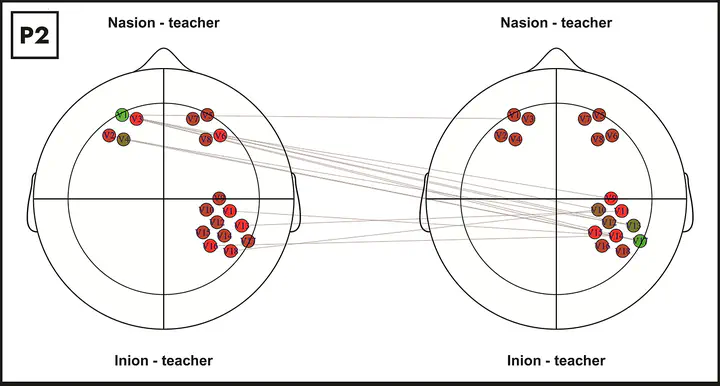
Abstract
Hyperscanning is a promising tool for investigating the neurobiological underpinning of social interactions and affective bonds. Recently, graph theory measures, such as modularity, have been proposed for estimating the global synchronization between brains. This paper proposes the bootstrap modularity test as a way of determining whether a pair of brains is coactivated. This test is illustrated as a screening tool in an application to fNIRS data collected from the prefrontal cortex and temporoparietal junction of five dyads composed of a teacher and a preschooler while performing an interaction task. In this application, graph hub centrality measures identify that the dyad’s synchronization is critically explained by the relation between teacher’s language and number processing and the child’s phonological processing. The analysis of these metrics may provide further insights into the neurobiological underpinnings of interaction, such as in educational contexts.